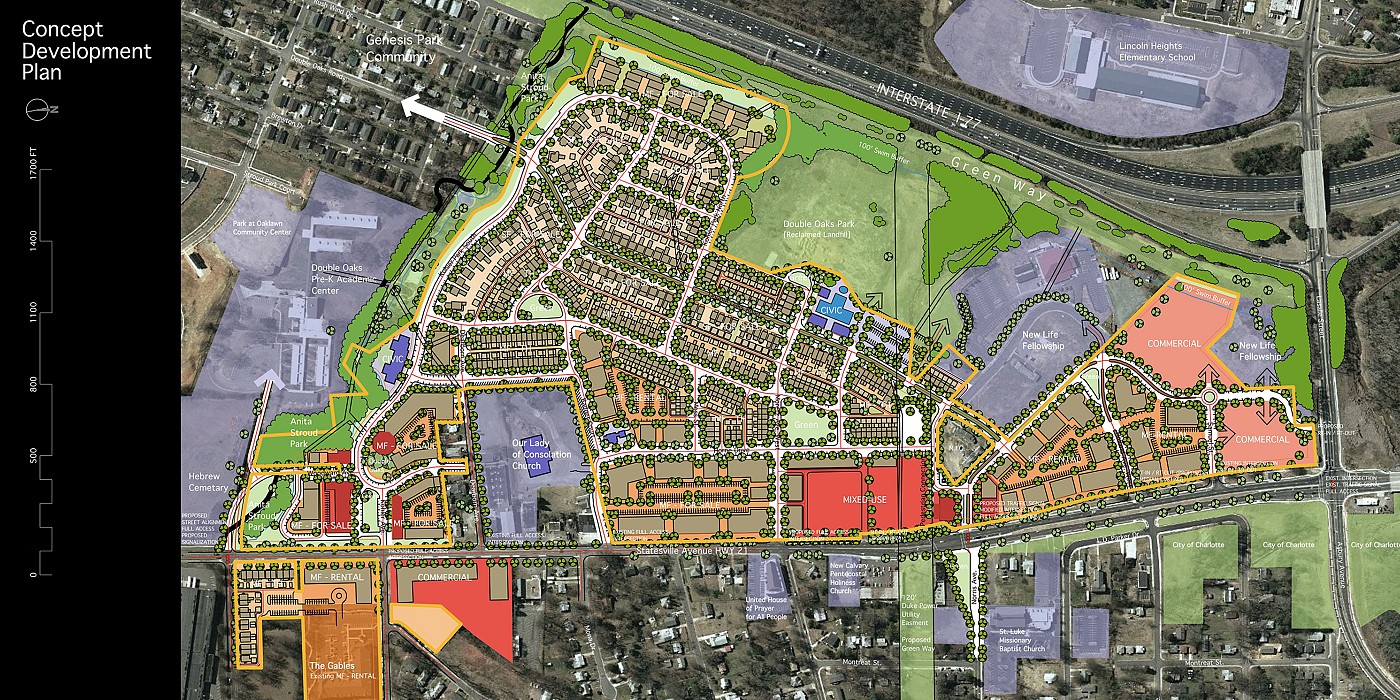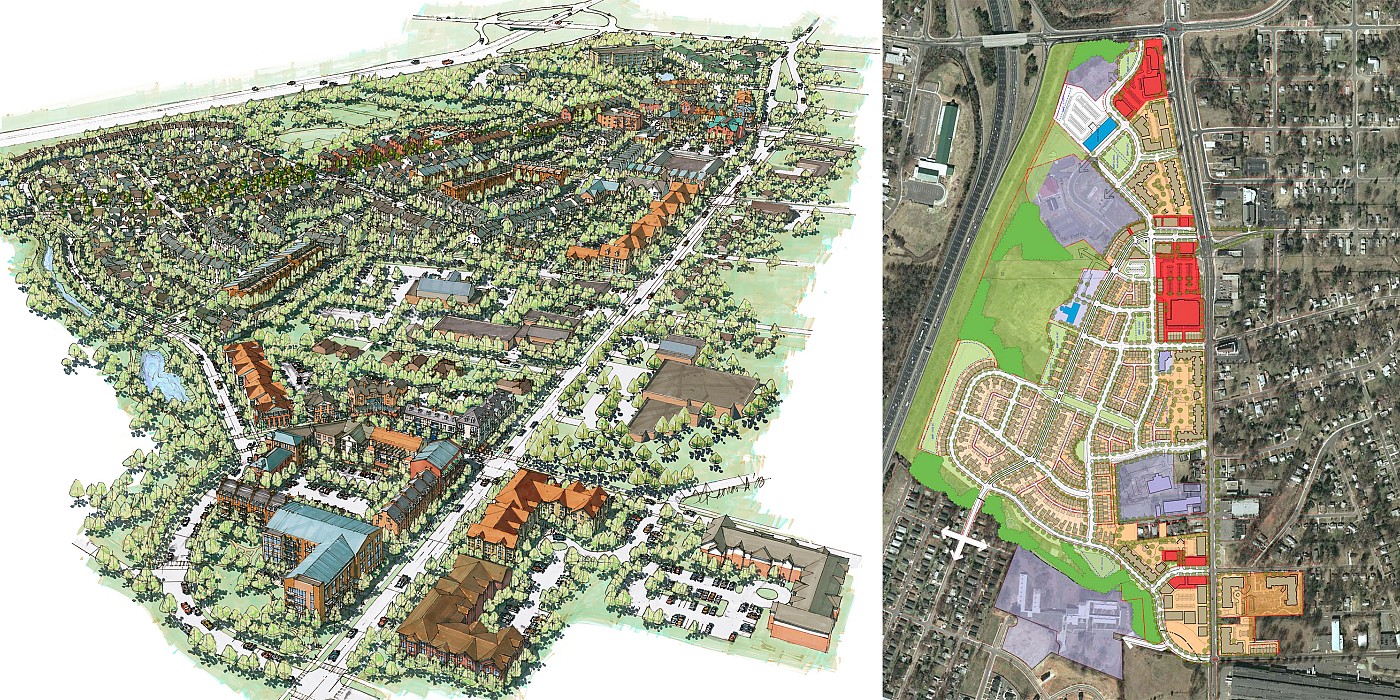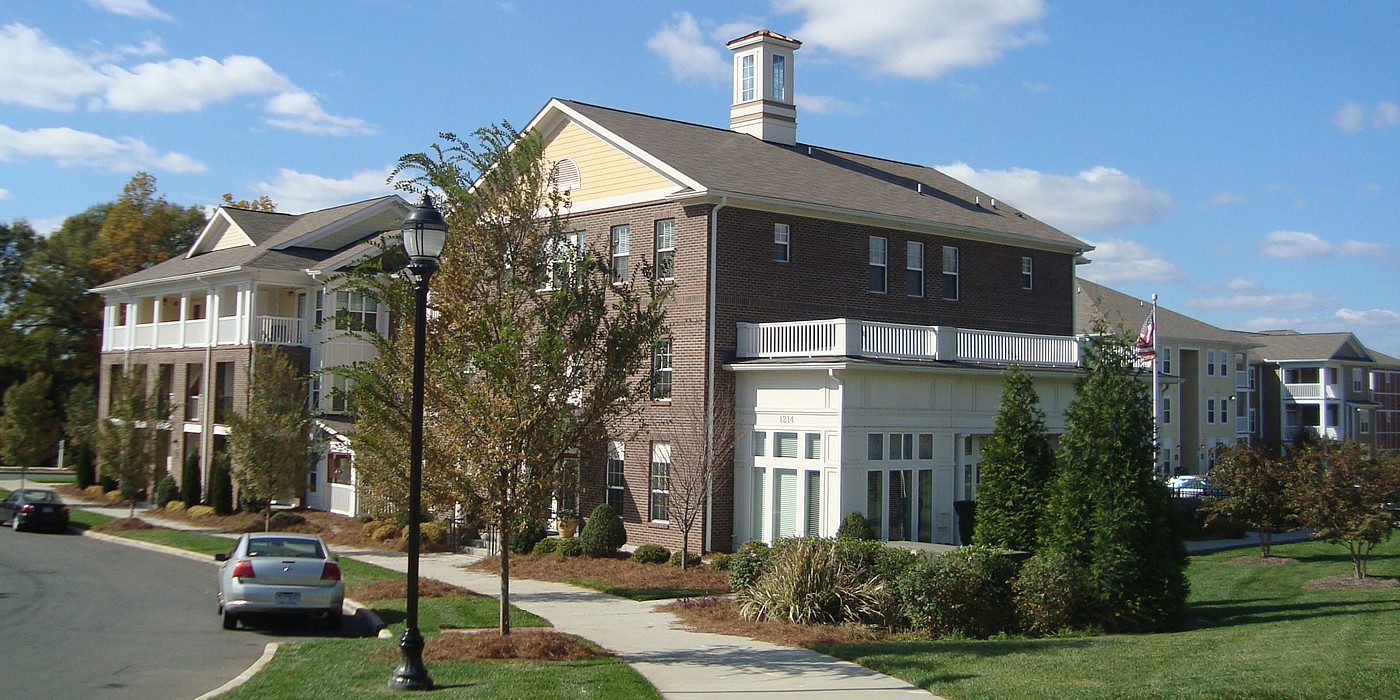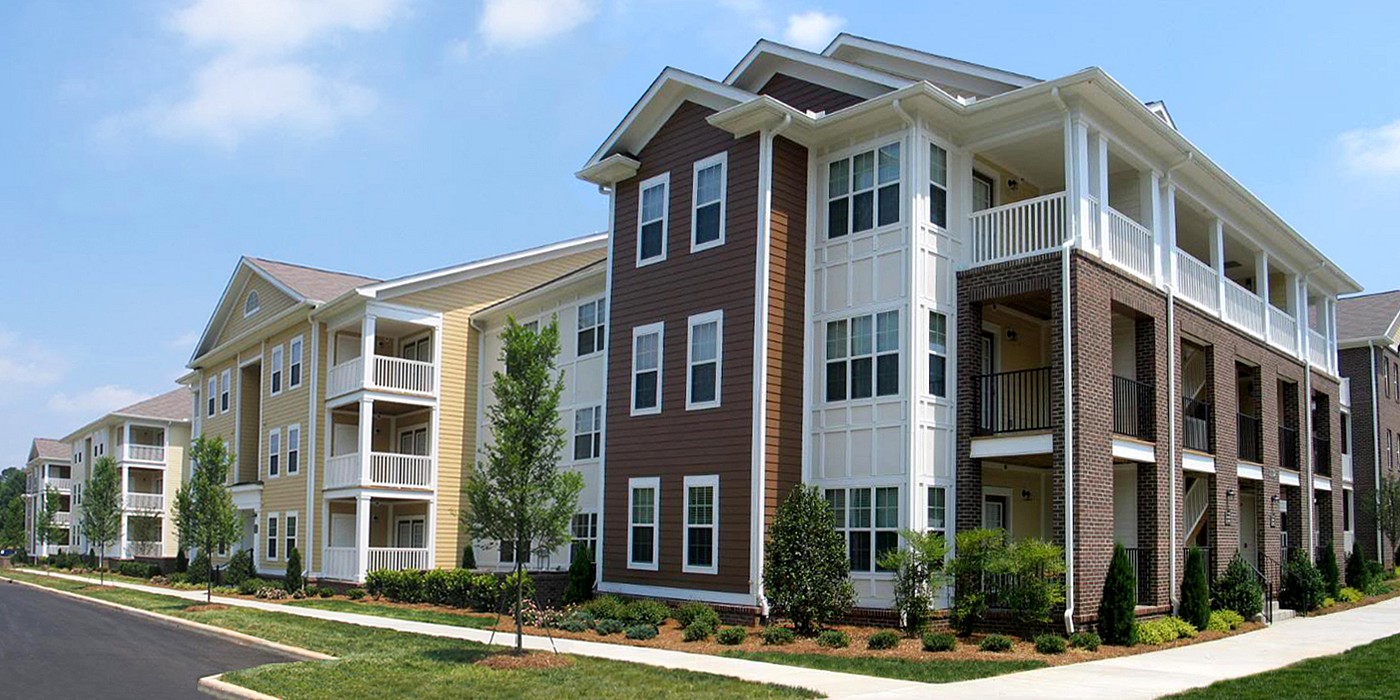- You have not saved any projects.
Brightwalk
On land that once was home to a low income housing project, a new mixed-use, mixed income, mixed-ownership community is rising. Shook Kelley was instrumental in the creation of the vision, the formation of the development program, establishment of the master plan and through architectural services has established the benchmarks for all future development. Brightwalk, which is only minutes from all of the employment and cultural amenities that Center City affords, has become the most sought after community of Millineals seeking home ownership, and the economically challenged on their way up the socio-economic ladder.




The land was originally home to Double Oaks, a low-income housing community developed by C.D. Spangler back in 1949. In it’s day it was considered to be a forward-thinking approach in addressing the racial inequalities for the times,, and the attendant paucity of proper housing for working class African American citizens. Located within an industrial zone of the city, its 98 acres contained 576 one- and two-bedroom apartments, built in a manner not unlike apartments found around Charlotte for the broader market. A great number of the city’s important African-Americans, or parents of future notable Charlotte citizens grew up in Double Oaks, and went from here to contribute richly to Charlotte’s success. But as the city and society moved on to better places, not only did the buildings age, but so did the concept behind them. Double Oaks increasingly became out of step with the needs of people and a modern society in which they lived. As a result, its substandard buildings, isolated in many ways from the broader community, became a last resort for people in need of basic shelter.
At this point the non-profit Charlotte Mecklenburg Housing Partnership (CMHP) stepped in with the intent to not only augment their other housing programs already underway in the area, but to transform this former industrial wasteland into Charlotte’s next great district; NORTH END. Aided through the assistance of various grants from both the public and private sectors along with significant support from the City of Charlotte to purchase Double Oaks, CMHP has led and continues to lead this transformation through the creation of Brightwalk.
Brightwalk utilizes the best practices—and even the resources—of the real estate development world, while achieving a goal that is definitely not on the radar of most for-profit real estate development entities.. That is, Brightwalk provides high quality housing for low- to moderate-income people utilizing the investment tools available to most cities. CMHP is building tax credit housing for families that earn 60% of the Area Median Income (AMI), as well as for the elderly of limited means. However, it does so within a new, expanded community that also includes market rate single family, townhouse and apartment dwellings that spans a broad racial, economic, age and family defined spectrum. Interspersed among the workforce housing, Standard Pacific–one of the nations premier builders–is selling single family and townhouses to a range of buyers. So well received is this new community that Brightwalk is among the top selling new developments in all of Mecklenburg County. The result is that in Brightwalk, the housing for those on the way up will be indistinguishable from those who need a leg up. This new community has been planned and designed to not only “fit in” the community, but to connect to and support adjacent neighborhoods through both physical and social infrastructure. The plan also includes the provision of services that cater to people’s daily needs—a supermarket, shops and service uses will soon be a part of the mix.
The Brightwalk community is the Charlotte community’s premier commitment to building mixed-income, mixed-use and sustainable infill neighborhoods.. It is the flagship of the CMHP, and is being viewed by many in this city as the model for future redevelopment of distressed, undervalued and urban real estate in partnerships with the non-profit and/or for profit sectors . In fact, Brightwalk was instrumental in the City of Charlotte’s formation of it’s novel CNIP program that matches up public funds with private sector neighborhood development.
Brightwalk’s first three multi-family structures were designed by Shook Kelley and financed through the North Carolina Housing Finance Agency (NCHFA). They are: The Gables II development (72 units of elderly independent living); The McNair development (96 units of multi-family housing) and; The Alexander development (48 units of multi-family housing.)
These multifamily structures define an established street corridor while utilizing a typically suburban multi-family building program defined by the NCHFA. The design involved connecting multiple story buildings along the street edge and at multiple intersections to create a varied, yet harmonious street wall. Shook Kelley created a series of street-front connected buildings instead of the typical suburban boxes set within parking lots. The design integrated the clubhouse program into the street front design with residential units above similar to historic mixed-use buildings, evoking each as center pieces of the mixed-use community with 'town hall' imagery.
The housing for those on the way up will be indistinguishable from those who need a leg up.
Some key sustainable features of the project include all units and appliances being Energy Star rated. The entire community has been established as an Audubon Lifestyle neighborhood. As part of the master planned project, CMHP is participating in stream restoration, an extension of the Greenway System, and development and re-use of the existing EPA Brownfield site as a community park as well as continued bus transit connections throughout the development.
Brightwalk is meeting the needs of those urban dwellers that wish to live an urban life close to the action of Center City, but in a format that fits their life situation. Not only is Brightwalk leveraging it’s location to Center City, it is capturing former abandoned open areas and creating wonderful parks infused with art through programs with the McColl Center and nationally awarded grants, and calming fast moving thoroughfares so that cars, pedestrians and cyclists all feel safe. These actions, together, are establishing links to the surrounding residential communities, affording a better quality of life to all, improving home values for those that own, and filling the tax coffers of the city.
The land was originally home to Double Oaks, a low-income housing community developed by C.D. Spangler back in 1949. In it’s day it was considered to be a forward-thinking approach in addressing the racial inequalities for the times,, and the attendant paucity of proper housing for working class African American citizens. Located within an industrial zone of the city, its 98 acres contained 576 one- and two-bedroom apartments, built in a manner not unlike apartments found around Charlotte for the broader market. A great number of the city’s important African-Americans, or parents of future notable Charlotte citizens grew up in Double Oaks, and went from here to contribute richly to Charlotte’s success. But as the city and society moved on to better places, not only did the buildings age, but so did the concept behind them. Double Oaks increasingly became out of step with the needs of people and a modern society in which they lived. As a result, its substandard buildings, isolated in many ways from the broader community, became a last resort for people in need of basic shelter.
At this point the non-profit Charlotte Mecklenburg Housing Partnership (CMHP) stepped in with the intent to not only augment their other housing programs already underway in the area, but to transform this former industrial wasteland into Charlotte’s next great district; NORTH END. Aided through the assistance of various grants from both the public and private sectors along with significant support from the City of Charlotte to purchase Double Oaks, CMHP has led and continues to lead this transformation through the creation of Brightwalk.
Brightwalk utilizes the best practices—and even the resources—of the real estate development world, while achieving a goal that is definitely not on the radar of most for-profit real estate development entities.. That is, Brightwalk provides high quality housing for low- to moderate-income people utilizing the investment tools available to most cities. CMHP is building tax credit housing for families that earn 60% of the Area Median Income (AMI), as well as for the elderly of limited means. However, it does so within a new, expanded community that also includes market rate single family, townhouse and apartment dwellings that spans a broad racial, economic, age and family defined spectrum. Interspersed among the workforce housing, Standard Pacific–one of the nations premier builders–is selling single family and townhouses to a range of buyers. So well received is this new community that Brightwalk is among the top selling new developments in all of Mecklenburg County. The result is that in Brightwalk, the housing for those on the way up will be indistinguishable from those who need a leg up. This new community has been planned and designed to not only “fit in” the community, but to connect to and support adjacent neighborhoods through both physical and social infrastructure. The plan also includes the provision of services that cater to people’s daily needs—a supermarket, shops and service uses will soon be a part of the mix.
The Brightwalk community is the Charlotte community’s premier commitment to building mixed-income, mixed-use and sustainable infill neighborhoods.. It is the flagship of the CMHP, and is being viewed by many in this city as the model for future redevelopment of distressed, undervalued and urban real estate in partnerships with the non-profit and/or for profit sectors . In fact, Brightwalk was instrumental in the City of Charlotte’s formation of it’s novel CNIP program that matches up public funds with private sector neighborhood development.
Brightwalk’s first three multi-family structures were designed by Shook Kelley and financed through the North Carolina Housing Finance Agency (NCHFA). They are: The Gables II development (72 units of elderly independent living); The McNair development (96 units of multi-family housing) and; The Alexander development (48 units of multi-family housing.)
These multifamily structures define an established street corridor while utilizing a typically suburban multi-family building program defined by the NCHFA. The design involved connecting multiple story buildings along the street edge and at multiple intersections to create a varied, yet harmonious street wall. Shook Kelley created a series of street-front connected buildings instead of the typical suburban boxes set within parking lots. The design integrated the clubhouse program into the street front design with residential units above similar to historic mixed-use buildings, evoking each as center pieces of the mixed-use community with 'town hall' imagery.
The housing for those on the way up will be indistinguishable from those who need a leg up.
Some key sustainable features of the project include all units and appliances being Energy Star rated. The entire community has been established as an Audubon Lifestyle neighborhood. As part of the master planned project, CMHP is participating in stream restoration, an extension of the Greenway System, and development and re-use of the existing EPA Brownfield site as a community park as well as continued bus transit connections throughout the development.
Brightwalk is meeting the needs of those urban dwellers that wish to live an urban life close to the action of Center City, but in a format that fits their life situation. Not only is Brightwalk leveraging it’s location to Center City, it is capturing former abandoned open areas and creating wonderful parks infused with art through programs with the McColl Center and nationally awarded grants, and calming fast moving thoroughfares so that cars, pedestrians and cyclists all feel safe. These actions, together, are establishing links to the surrounding residential communities, affording a better quality of life to all, improving home values for those that own, and filling the tax coffers of the city.